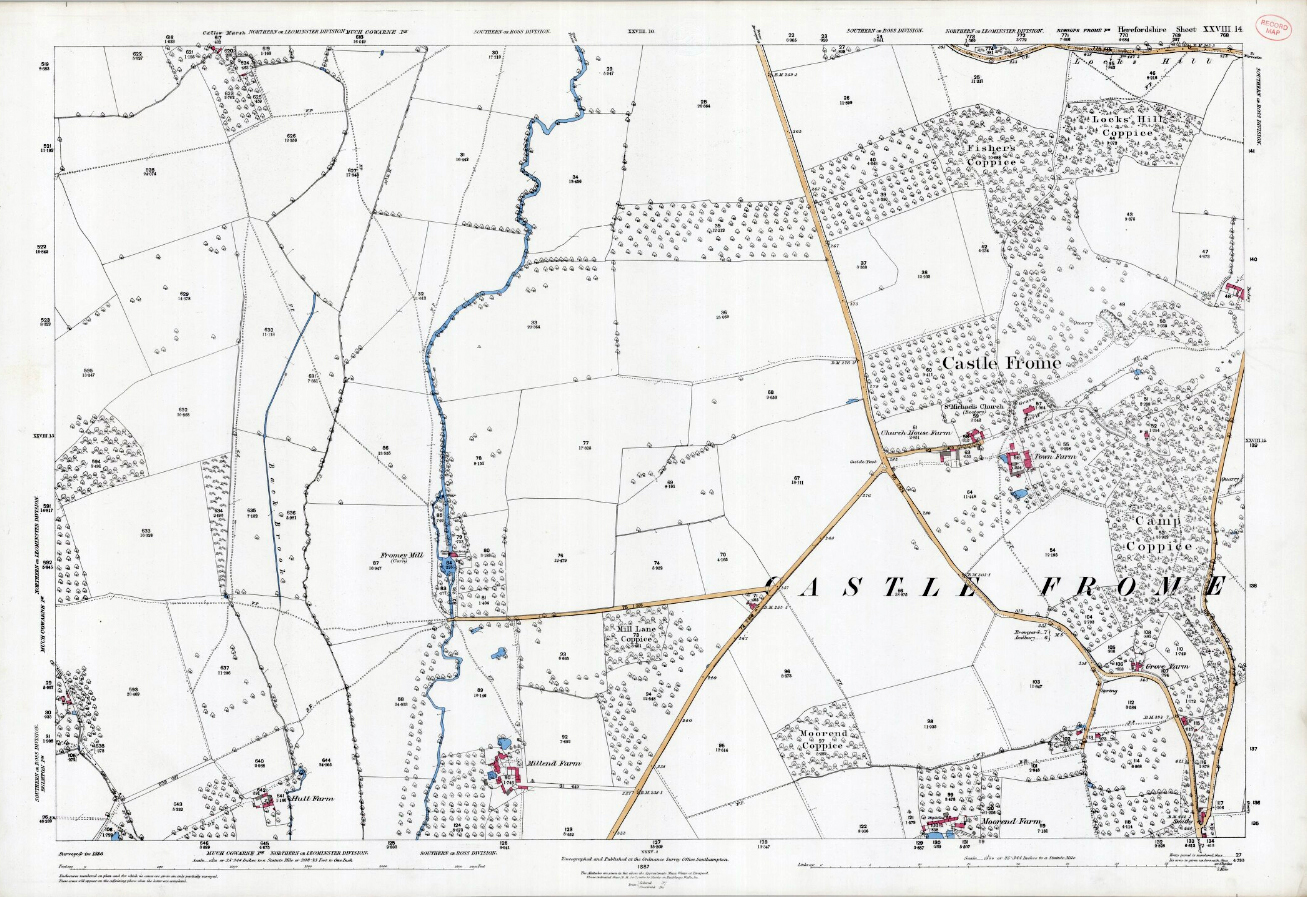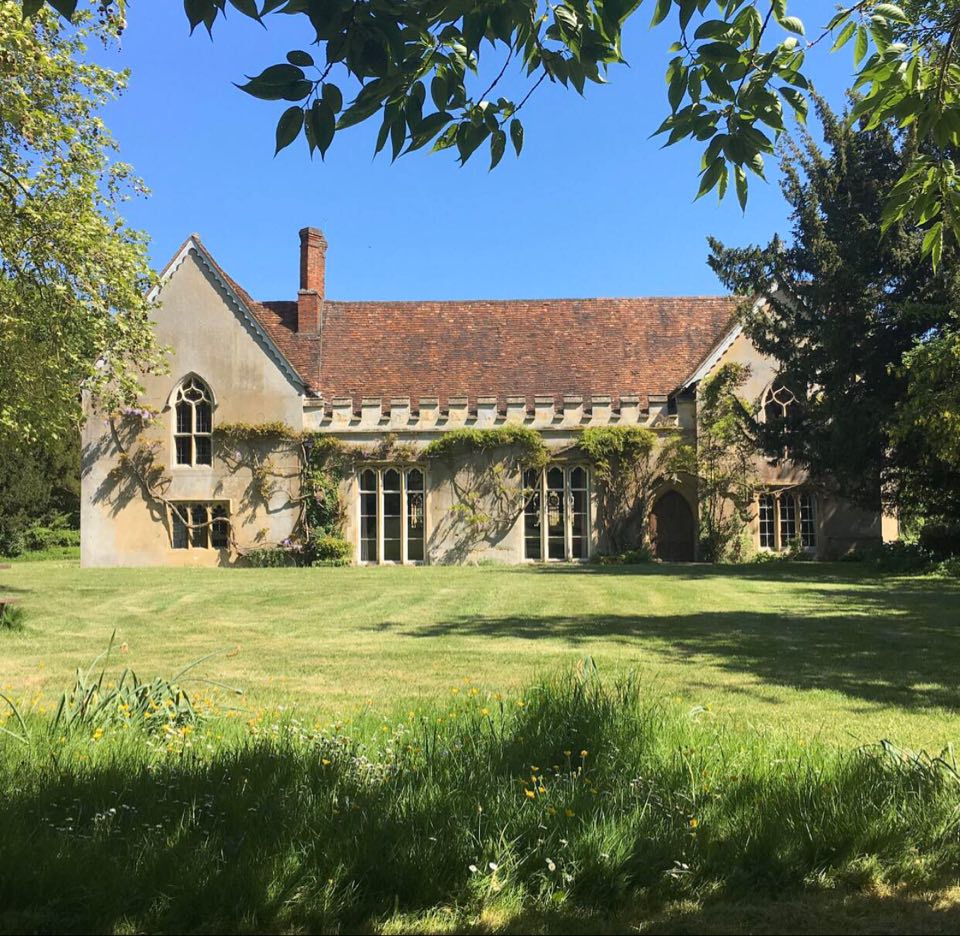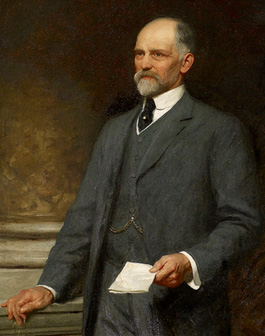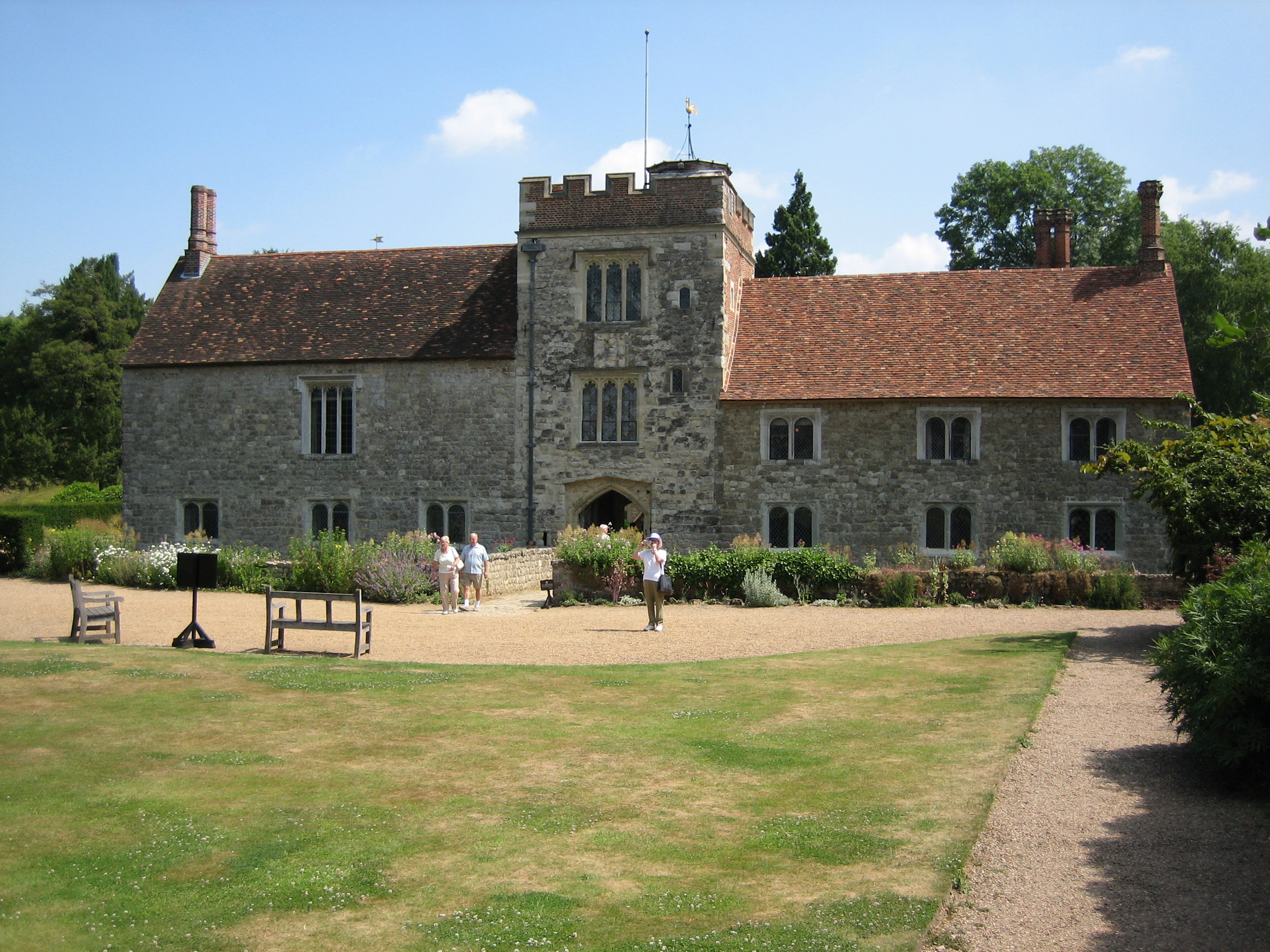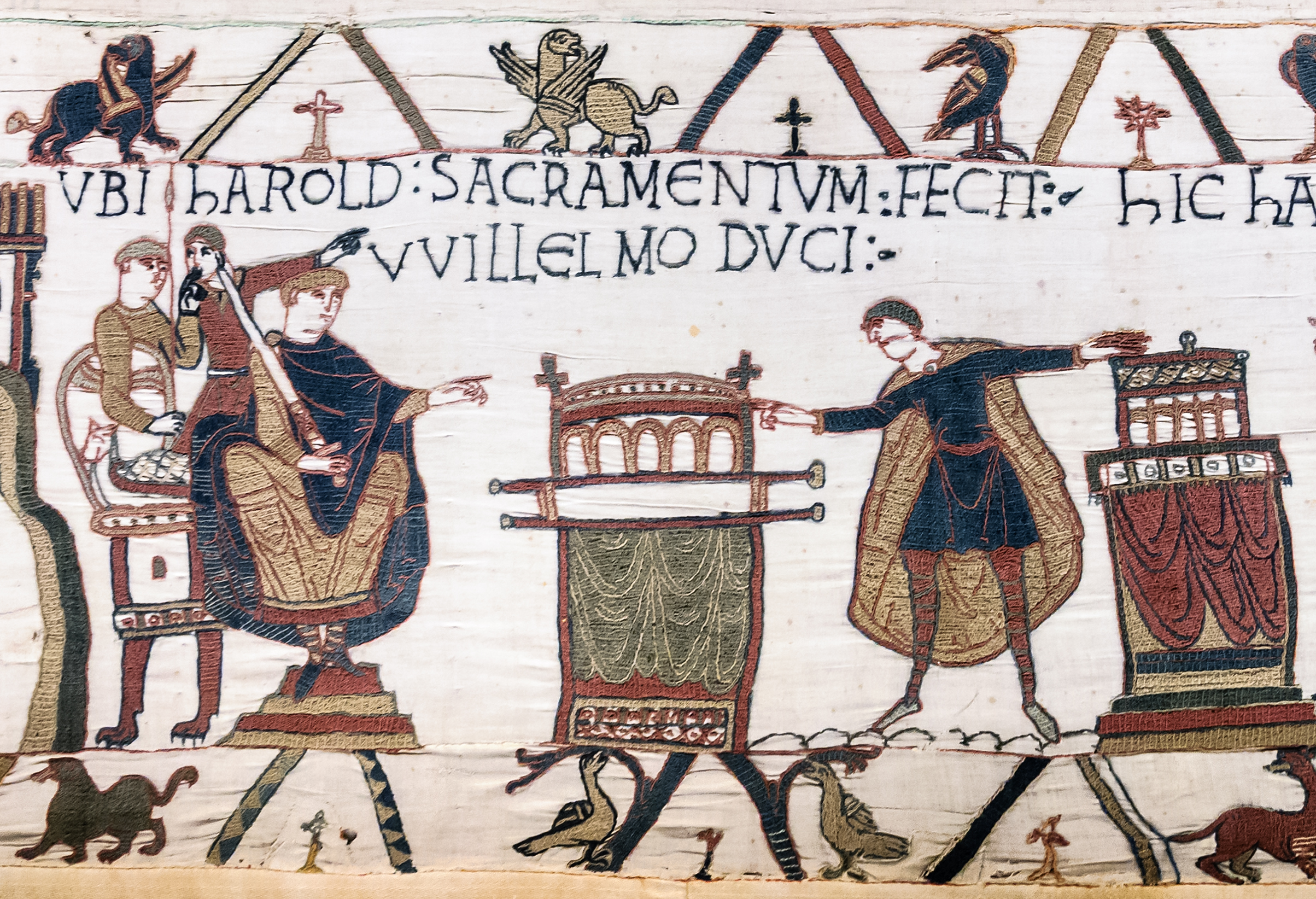|
Castle Frome
Castle Frome is a village and civil parish in the county of Herefordshire, England, and is north-east from the city and county town of Hereford. The closest large town is the market town of Bromyard, to the north. The Norman architecture, Norman baptismal font, font in Castle Frome church is "one of the outstanding works of the Herefordshire school". History The affix 'Castle' signifies the existence of the Norman fortress. 'Frome' is taken from the River Frome, Herefordshire, Frome river and this from the Celtic languages, Celtic 'ffraw' meaning "fair, fine, brisk", the settlement in 1242 written as "Froma Castri". Listed in the ''Domesday Book'' as "Frume", at the time of the Norman conquest of England, Norman Conquest Castle Frome was in the Hundred (county subdivision), Hundred of Radlow in the county of Herefordshire. The manor had assets of 19 households, seven Serfdom#Villeins, villagers, one Serfdom#Freemen, freeman, ten slaves, and one Reeve (England), reeve, and a m ... [...More Info...] [...Related Items...] OR: [Wikipedia] [Google] [Baidu] |
North Herefordshire (UK Parliament Constituency)
North Herefordshire is a constituency represented in the House of Commons of the UK Parliament since its 2010 creation by Bill Wiggin, a Conservative. Members of Parliament Constituency profile The seat has a substantially self-sufficient population, covered by civil parishes and with low rates of unemployment and social housing in each ward, with income levels concentrated towards the average in Britain. Boundaries This constituency contains a northern and central part of Herefordshire, including the towns of Bromyard, Kington, Ledbury and Leominster. The constituency has the electoral wards: *Backbury, Bircher, Bringsty, Bromyard, Burghill, Holmer and Lyde, Castle, Credenhill, Frome, Golden Cross with Weobley, Hagley, Hampton Court, Hope End, Kington Town, Ledbury, Leominster North, Leominster South, Mortimer, Old Gore, Pembridge and Lyonshall with Titley, Sutton Walls, Upton, Wormsley Ridge. The village of Weobley (listed above) was a former borough cons ... [...More Info...] [...Related Items...] OR: [Wikipedia] [Google] [Baidu] |
Serfdom
Serfdom was the status of many peasants under feudalism, specifically relating to manorialism, and similar systems. It was a condition of debt bondage and indentured servitude with similarities to and differences from slavery, which developed during the Late Antiquity and Early Middle Ages in Europe and lasted in some countries until the mid-19th century. Unlike slaves, serfs could not be bought, sold, or traded individually though they could, depending on the area, be sold together with land. The kholops in Russia, by contrast, could be traded like regular slaves, could be abused with no rights over their own bodies, could not leave the land they were bound to, and could marry only with their lord's permission. Serfs who occupied a plot of land were required to work for the lord of the manor who owned that land. In return, they were entitled to protection, justice, and the right to cultivate certain fields within the manor to maintain their own subsistence. Serfs were ... [...More Info...] [...Related Items...] OR: [Wikipedia] [Google] [Baidu] |
Covenanter
Covenanters ( gd, Cùmhnantaich) were members of a 17th-century Scottish religious and political movement, who supported a Presbyterian Church of Scotland, and the primacy of its leaders in religious affairs. The name is derived from '' Covenant'', a biblical term for a bond or agreement with God. The origins of the movement lay in disputes with James VI, and his son Charles I over church structure and doctrine. In 1638, thousands of Scots signed the National Covenant, pledging to resist changes imposed by Charles on the kirk; following victory in the 1639 and 1640 Bishops' Wars, the Covenanters took control of Scotland and the 1643 Solemn League and Covenant brought them into the First English Civil War on the side of Parliament. Following his defeat in May 1646 Charles I surrendered to the Scots Covenanters, rather than Parliament. By doing so, he hoped to exploit divisions between Presbyterians, and English Independents. As a result, the Scots supported Charles in the ... [...More Info...] [...Related Items...] OR: [Wikipedia] [Google] [Baidu] |
Kingdom Of Scotland
The Kingdom of Scotland (; , ) was a sovereign state in northwest Europe traditionally said to have been founded in 843. Its territories expanded and shrank, but it came to occupy the northern third of the island of Great Britain, sharing a land border to the south with England. It suffered many invasions by the English, but under Robert the Bruce it fought a successful War of Independence and remained an independent state throughout the late Middle Ages. Following the annexation of the Hebrides and the Northern Isles from Norway in 1266 and 1472 respectively, and the final capture of the Royal Burgh of Berwick by England in 1482, the territory of the Kingdom of Scotland corresponded to that of modern-day Scotland, bounded by the North Sea to the east, the Atlantic Ocean to the north and west, and the North Channel and Irish Sea to the southwest. In 1603, James VI of Scotland became King of England, joining Scotland with England in a personal union. In 1707, d ... [...More Info...] [...Related Items...] OR: [Wikipedia] [Google] [Baidu] |
Manor House
A manor house was historically the main residence of the lord of the manor. The house formed the administrative centre of a manor in the European feudal system; within its great hall were held the lord's manorial courts, communal meals with manorial tenants and great banquets. The term is today loosely applied to various country houses, frequently dating from the Late Middle Ages, which formerly housed the landed gentry. Manor houses were sometimes fortified, albeit not as fortified as castles, and were intended more for show than for defencibility. They existed in most European countries where feudalism was present. Function The lord of the manor may have held several properties within a county or, for example in the case of a feudal baron, spread across a kingdom, which he occupied only on occasional visits. Even so, the business of the manor was directed and controlled by regular manorial courts, which appointed manorial officials such as the bailiff, granted copyhol ... [...More Info...] [...Related Items...] OR: [Wikipedia] [Google] [Baidu] |
English Civil War
The English Civil War (1642–1651) was a series of civil wars and political machinations between Parliamentarians ("Roundheads") and Royalists led by Charles I ("Cavaliers"), mainly over the manner of Kingdom of England, England's governance and issues of religious freedom. It was part of the wider Wars of the Three Kingdoms. The First English Civil War, first (1642–1646) and Second English Civil War, second (1648–1649) wars pitted the supporters of King Charles I of England, Charles I against the supporters of the Long Parliament, while the Third English Civil War, third (1649–1651) saw fighting between supporters of King Charles II of England, Charles II and supporters of the Rump Parliament. The wars also involved the Covenanters, Scottish Covenanters and Confederate Ireland, Irish Confederates. The war ended with Parliamentarian victory at the Battle of Worcester on 3 September 1651. Unlike other list of English civil wars, civil wars in England, which were mainly ... [...More Info...] [...Related Items...] OR: [Wikipedia] [Google] [Baidu] |
University Of Hull
, mottoeng = Bearing the Torch f learning, established = 1927 – University College Hull1954 – university status , type = Public , endowment = £18.8 million (2016) , budget = £190 million (2016) , chancellor = Baroness Bottomley of Nettlestone , vice_chancellor = David Petley , head_label = Visitor , head = The Lord President of the Council ''ex officio'' , students = () , undergrad = () , postgrad = () , doctoral = , city = Kingston upon Hull , country = England , campus = Urban area , colours = Scarf colours, blue and gold Academic silk colour turquoise blue , nickname = , mascot = , website www.hull.ac.uk, logo = University of Hull logo.svg , logo_size = 200px , footnotes = , academic_staff = 1,005 (2020) , total_staff = 2,190 (2020) , affiliations = Global U8 (GU8) Utr ... [...More Info...] [...Related Items...] OR: [Wikipedia] [Google] [Baidu] |
William The Conqueror
William I; ang, WillelmI (Bates ''William the Conqueror'' p. 33– 9 September 1087), usually known as William the Conqueror and sometimes William the Bastard, was the first Norman king of England The monarchy of the United Kingdom, commonly referred to as the British monarchy, is the constitutional form of government by which a hereditary sovereign reigns as the head of state of the United Kingdom, the Crown Dependencies (the Bailiw ..., reigning from 1066 until his death in 1087. A descendant of Rollo, he was Duke of Normandy from 1035 onward. By 1060, following a long struggle to establish his throne, his hold on Normandy was secure. In 1066, following the death of Edward the Confessor, William invaded England, leading an army of Normans to victory over the Anglo-Saxons, Anglo-Saxon forces of Harold Godwinson at the Battle of Hastings, and suppressed subsequent English revolts in what has become known as the Norman Conquest. The rest of his life was marked by str ... [...More Info...] [...Related Items...] OR: [Wikipedia] [Google] [Baidu] |
Tenant-in-chief
In medieval and early modern Europe, the term ''tenant-in-chief'' (or ''vassal-in-chief'') denoted a person who held his lands under various forms of feudal land tenure directly from the king or territorial prince to whom he did homage, as opposed to holding them from another nobleman or senior member of the clergy.Bloch ''Feudal Society Volume 2'' p. 333Coredon ''Dictionary of Medieval Terms & Phrases'' p. 272 The tenure was one which denoted great honour, but also carried heavy responsibilities. The tenants-in-chief were originally responsible for providing knights and soldiers for the king's feudal army.Bracton, who indiscriminately called tenants-in-chief "barons" stated: "sunt et alii potentes sub rege qui barones dicuntur, hoc est robur belli" ("there are other magnates under the king, who are called barons, that is the hardwood of war"), quoted in Sanders, I.J., ''Feudal Military Service in England'', Oxford, 1956, p.3; "Bracton's definition of the ''baro''" (plur ''baron ... [...More Info...] [...Related Items...] OR: [Wikipedia] [Google] [Baidu] |
Roger De Lacy
Roger de Lacy (died after 1106) was an Anglo-Norman nobleman, a Marcher Lord on the Welsh border. Roger was a castle builder, particularly at Ludlow Castle. Lands and titles From Walter de Lacy (died 1085) he inherited Castle Frome, Herefordshire. The Domesday Survey (1086) shows Roger holding also Ocle Pychard, Almeley Castle, Eardisley Castle, Icomb Place and Edgeworth Manor. He had an insecure lordship at Ewias Lacy now known as Longtown Castle on the modern day Welsh border., in Longtown, Herefordshire; Stanton Lacy was probably also his after Walter. His main stronghold was Weobley. He held directly from the King. De Lacy also held 1.5 salthouses in Droitwich. Rebel Baron He took part in the rebellion of 1088 against William Rufus, with the other local lords Osbern fitzRichard of Richard's Castle, Ralf of Mortemer, and Bernard of Neufmarche. He was later implicated in the conspiracy of 1095 against William, and was exiled. Legacy of family conflict Weobley p ... [...More Info...] [...Related Items...] OR: [Wikipedia] [Google] [Baidu] |
Lord Of The Manor
Lord of the Manor is a title that, in Anglo-Saxon England, referred to the landholder of a rural estate. The lord enjoyed manorial rights (the rights to establish and occupy a residence, known as the manor house and demesne) as well as seignory, the right to grant or draw benefit from the estate. The title continues in modern England and Wales as a legally recognised form of property that can be held independently of its historical rights. It may belong entirely to one person or be a moiety shared with other people. A title similar to such a lordship is known in French as ''Sieur'' or , in German, (Kaleagasi) in Turkish, in Norwegian and Swedish, in Welsh, in Dutch, and or in Italian. Types Historically a lord of the manor could either be a tenant-in-chief if he held a capital manor directly from the Crown, or a mesne lord if he was the vassal of another lord. The origins of the lordship of manors arose in the Anglo-Saxon system of manorialism. Following ... [...More Info...] [...Related Items...] OR: [Wikipedia] [Google] [Baidu] |
Harold Godwinson
Harold Godwinson ( – 14 October 1066), also called Harold II, was the last crowned Anglo-Saxon English king. Harold reigned from 6 January 1066 until his death at the Battle of Hastings, fighting the Norman invaders led by William the Conqueror during the Norman conquest of England. His death marked the end of Anglo-Saxon rule over England. Harold Godwinson was a member of a prominent Anglo-Saxon family with ties to Cnut the Great. He became a powerful earl after the death of his father, Godwin, Earl of Wessex. After his brother-in-law, King Edward the Confessor, died without an heir on 5 January 1066, the '' Witenagemot'' convened and chose Harold to succeed him; he was probably the first English monarch to be crowned in Westminster Abbey. In late September, he successfully repelled an invasion by rival claimant Harald Hardrada of Norway in York before marching his army back south to meet William the Conqueror at Hastings two weeks later. Family background Ha ... [...More Info...] [...Related Items...] OR: [Wikipedia] [Google] [Baidu] |
